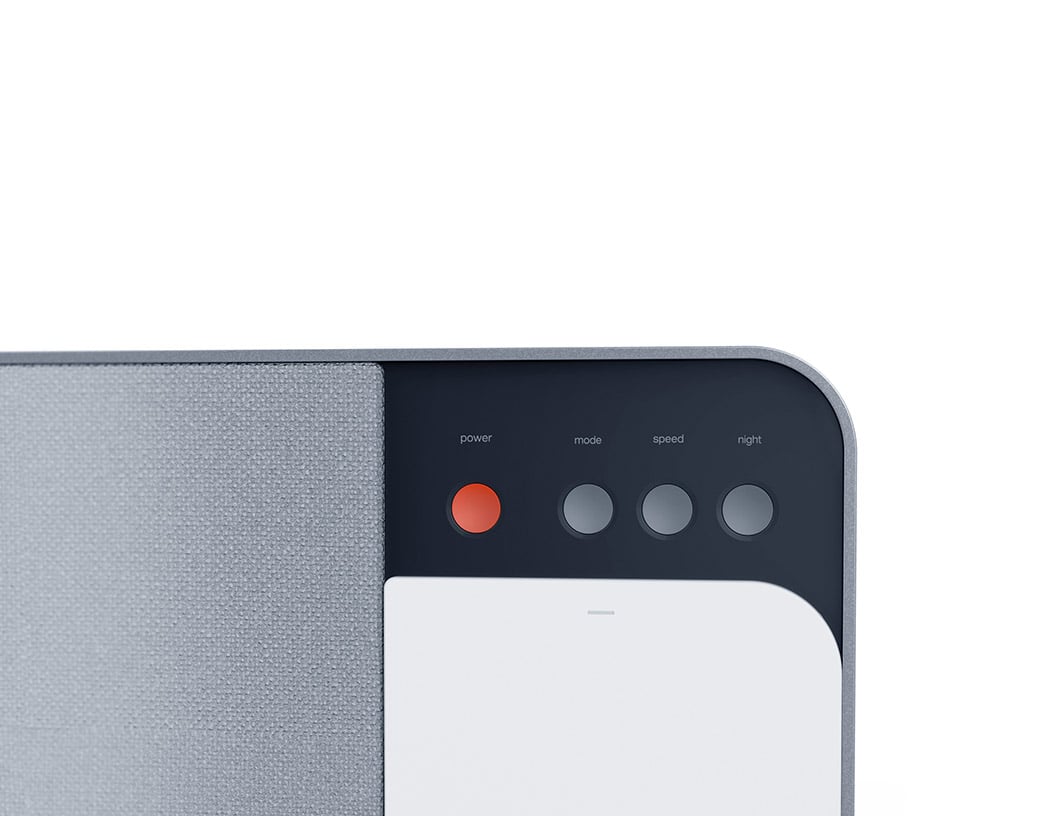Table Of Content
There are many products that helped to build Braun’s audio reputation but few did more for the brand than the Braun T 1000. Housed in a small oblong case, the T 1000 could scan all available broadcasting frequencies. What might sound insignificant nowadays was ground-breaking in 1963. T 1000-designer Dieter Rams and Braun believed that well-designed products could promote democracy — a concept evidenced in abundance by the small, powerful T 1000. As Germany was still emerging from the remnants of WWII, the bandwidth and mobility of the T 1000 offered access to the world. Finished with a transistor radio positioned at the top of the product, the TP 1 broke ground for portable audio equipment, paving the way for designs that were some 50 years from inception.
Core77
This San Francisco Home's Design Pays Homage to Its Lovely Architectural Bones - Martha Stewart
This San Francisco Home's Design Pays Homage to Its Lovely Architectural Bones.
Posted: Mon, 10 Feb 2020 08:00:00 GMT [source]
In 2009, Rams said, “Today you find only a few companies that take design seriously, as I see it, and, at the moment that is an American company. In addition to endless gadget porn, the book also aims to correct a few things about Braun design for the historical record — namely, that Rams had help. Although Rams’ identity is so intertwined with the company that he’s been mistakenly (or jokingly) called Mr. Braun at times, he’s the first person to remind people that executing the company’s design strategy was always a team effort. Designed to Keep attempts to set the record straight by giving credit where credit is due. These days many people are familiar with Rams’ design maxims – ‘good design makes a product useful’, ‘good design is long-lasting’ and ‘less is more’ – but for a time the wacky post-modernism of Philippe Starck and Alessi had rendered those rules unfashionable.
STAY UP-TO-DATE WITH BROWN
He then placed the L2 speaker on a slender metal stand – another innovation which was swiftly copied by Braun’s competitors. Erwin & Artur Braun and Dr. Fritz EichlerOn Max Braun’s death in 1951, his sons Artur (1) and Erwin (2) assumed the company leadership until 1961. Artur Braun “designed” the Radio SK 1/2 (3) together with Dr. Fritz Eichler (4) in 1955. This portable vinyl and radio player stood out at a time when most electronic products coming out of the US were clunky and BIG. Step in Dieter, whose miniaturization and decluttering of the record player flipped the industry on its head. At Braun, we have a different take on developing electromechanical devices.
Dieter Rams. Modular World

It is a minimalist design that is in keeping with the Braun principles with a focus on simplicity and increasing the flexibility and freedom of the user. As part of its centenary, the brand has opened this year's BraunPrize. Through this year's challenge to "shape tomorrow," it asks the next generation of designers to develop concepts that drive behavioural change intending to solve the challenges of the future.
Also during the 1960s, Braun created the Rams-designed T3 pocket radio. By this time, Braun's film slide projectors were featuring high-quality optics and all-metal construction combined with sleek functionalist styling, and competed with higher-end Eastman Kodak and Leitz products in the global market. Braun also started distributing in Germany high-end medium-format SLR system cameras produced by Japanese camera manufacturer Zenza Bronica, as well as Braun-Nizo brand cameras and Super 8 film cameras (formerly of Niezoldi & Krämer GmbH; purchased by Braun in 1962). In 1967, the Boston, Massachusetts-based conglomerate Gillette Group acquired a majority share of the company.
Thousands of people visit this research facility each year to help us realize completely novel ideas, ensuring that the people who ultimately use our products are part of the development process every step of the way. This proximity to the R&D labs enables us to test technologies and prototypes at a very early stage. In fact, most of our test devices do not look like the final product at all – they merely help us understand if an idea is technically feasible or not.At the same time, Braun scientists all over the world go to visit consumers in their homes.
Just take a closer look at some of today’s entertainment electronics and you'll be able to spot the similarities. Sometimes a brand comes along with an outlook so refreshingly new that it revolutionizes an art. While for some that means bringing extra qualities to the table, for Braun, it meant taking things away. Under the motto, “Less but better,” Braun set about altering the face of modern product design with a steadfast set of values that revolved around efficiency. Now, on Braun’s 100th anniversary, we look back at some of the designs that forged an icon.
Abandoning the traditional wooden cabinet, they devised an unapologetically industrial metal case for the SK4 with two pale wooden sides. The operating panel was positioned on the top next to the turntable, rather than hidden away at the side. Originally the cover was to have been made of metal, but it vibrated too much in tests and was replaced, upon Rams suggestion, with transparent plastic which exposed the mechanics of the record player. Critics who had nicknamed the SK4 ‘ Snow White’s coffin’ thought people would be repulsed by the sight of electrical apparatus, but instead consumers considered it chic. Transparent lids became an industry standard and Rams became a name to watch. For nearly 30 years Dieter Rams served as head of design for Braun A.G.
Discover the 10 principles of Good Design by Dieter Rams
Rams covered the whole front of the speakers with super-light membranes as a visual allusion to the clarity of the LE1’s sound while presenting it as a proud symbol of engineering innovation. We chose Brown almost a year ago based upon their sterling reputation. The challenge for Brown was to help us design, renovate, and decorate our newly purchased home in Boca Raton. Looking back on our experience, what stands out in our minds was their ability to listen and then translate that into a vision that captured the true meaning of our dream home. We are constantly amazed when we look around our home at the transformation that our talented designer helped us create. Discover how to reach new heights of success through a smartly designed space that enhances the experience of your brand.
Rams and his team applied it to other products throughout the late 1960s and 1970s, including clocks, calculators and watches. Rams’ design rubricBy 1963, when he developed the TS45 control unit, TG60 tape recorder and L450 loudspeaker, Rams had perfected the codification of Braun design in terms of structure and colour. Each unit was exactly the same size to give the user maximum flexibility in deciding how to combine and display them, either vertically or horizontally. In terms of colour coding, the steel plate case of the audio units was in white or charcoal grey with an aluminium coverlid. The operating elements were pale or dark grey except for the green on/off switch. Adhering to these codes ensured that, at a time when technology was changing rapidly, consumers could be confident of learning how to use each new Braun product quickly and efficiently.
Collaborate with our experienced, attentive team to design a space that enriches your wellbeing and cultivates an authentic feeling of home. Professors Hans Gugelot and Otl Aicher came on board and, with the Braun team, designed a completely new radio and phonographic line. I used Panasonic best shavers for many years- Braun is a serious upgrade in feeling, quality, shave time and maintenance. For over 100 years, Braun has been designing grooming products that are simple, useful, and build to last. From epilators to electric razors, discover Braun's extensive product range for all your grooming and hair removal needs. Picking up on what Braun has been doing for 100 years, the Series 9 is a piece of craftsmanship that fits flawlessly onto Braun's timeline of timeless design.
Also, in the early 1980s, Braun sold its photographic and slide projector division to Robert Bosch GmbH. Developing a Coherent Design VisionRams refined the design language he and Gugelot had adopted for the SK4 in the following year’s Atelier 1 hi-fi system and L1 loud speakers. Until then stereo systems had consisted of single units with integrated speakers, but Rams separated the speakers to make the receiver unit more compact. Subsequent developments in stereophonic technology ensured that this too soon became a standard. Determined to develop a coherent ‘family’ of products for Braun, Rams designed the Atelier 1 and L1 in the same proportions as the SK4. Consequently they could be used together with the L1 being added to the SK4 to amplify its sound.
Sent every Thursday and featuring a selection of the best reader comments and most talked-about stories. This 1980 shaver featured 500 rubber stubs covering an aluminium surface. It was the first use of anti-slip "hard and soft technology" by which hard and soft materials are fused. Up until the SM 31 was launched in 1962, shavers were typically chrome and cream and had a "medical feel" about them. With a brushed matte surface which was initially produced by hand, the SM 31 had a more masculine appearance. The SK 4 demonstrated that taking a functional approach didn't have to result in a cold design and could instead be human-focused.
Forty Years at BraunDieter Rams remained design director of Braun until 1995 when he was succeeded by Peter Schneider. Between 1995 and 1997 he became the Executive Director of corporate identity affairs at Braun. In 1997 he left the company and retired emeritus from his position at Hochschule fϋr bildende Kϋnste. During his forty years at Braun, along with numerous colleagues and a core design team, he developed products to be manufactured at vast scale and used daily by millions of people. The product range Braun offers today spans from personal grooming devices to household utensils, from watches to products for dental care. The entertainment electronics and film/photo product, which were once extremely successful items, have been abandoned making the surviving designs prised collectable objects.
The competition is open to anyone with less than five years of design work experience. For more details on how to enter the 21st BraunPrize, visit the BraunPrize website. As part of the centenary, Dezeen has collaborated with Braun to present their three-episode masterclass series hosted by Ilse Crawford, which encourages designers and users to consider "good design for a better future". Designed to Keep makes a valiant effort to chronicle the Braun of today, covering mistakes and setbacks and, more recently, reinventions, while suggesting it could again influence an industry with its innovations. Maybe, but the book’s appeal is unquestionably in looking backward, and there are benefits in doing that for Braun and the entire consumer electronics industry.
Instead Rams divided the responsibility for the development of different products among the young designers in his team. Gerd A. Müller was responsible for kitchen appliances, Roland Weigend for scales, model-making and product graphics, while Rams concentrated on radios, record players, torches and projectors. In 1963, the company started distributing microphones by U.S. manufacturer Shure in Germany.

No comments:
Post a Comment